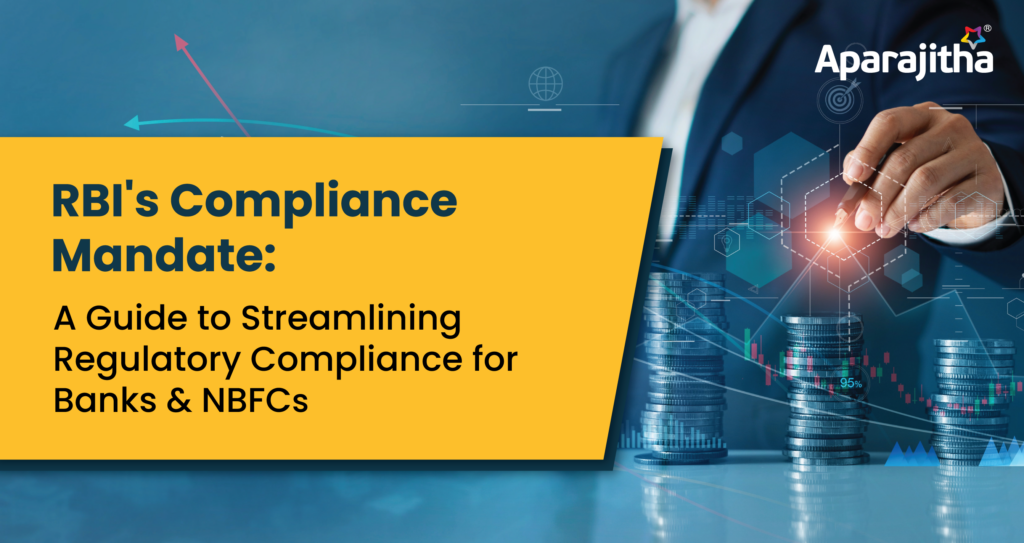RBI issued a circular mandating to streamline regulatory compliance for all Indian financial institutions, including banks and NBFCs (Non-banking Financial Company).
Let’s dive into the guide to understand the compliance policy, requirements, need to streamline compliance, risk management guidelines, and every other facet of mandatory compliance.
RBI Compliance Policy for Banks and NBFCs
According to RBI compliance policy, banks and NBFCs, among other financial institutions, are required to upgrade to streamlined internal compliance for monitoring functions using technological solutions by 30th June 2024.
On 31st January 2024, RBI passed the circular after conducting a thorough assessment of Supervised Entities (SEs). As per the assessment, despite adopting different levels of automation (spreadsheets to software solutions), the automation of the monitoring process is a work in progress and requires more systematic process in place.
With prevailing human interventions, there is still a gap between regulatory guidelines and the compliance process. Thus, RBI emphasised the need to move towards comprehensive, integrated, enterprise-wide, and workflow–based solutions or tools. It will enhance compliance automation to make it effective and efficient.
Compliance Requirements for Banks and NBFCs in India
Based on the latest RBI circular, the internal compliance process for banks and NBFCs in India should meet the following requirements:
- Immaculate Compliance Management Process
The primary requirement is to make internal compliance management systematic and efficient. The solution/tool should be able to identify, monitor, assess and manage all compliance regulations. And in case of non-compliance, it should be responsive software to escalate the issue.
- Constructive Communication and Collaboration
All stakeholders, from IT teams to Senior Management, require one platform to come together. One platform fosters seamless communication and effective collaboration among all. It should be similar to a collaborative workspace for the stakeholders.
- Recording Approval of Authority
If, in any circumstance, there is a delay in compliance submission, the solution/tool is required to have the recorded approval of the competent authority.
- Unified Dashboard View
Another compliance requirement for banks and NBFCs to meet is to boast a unified dashboard. It will enable Senior Management to view the entire compliance position of the Regulated Entity (RE).
What is the Need for Streamlining Regulatory Compliance?
Now that you are acquainted with the policy and requirements – you must be wondering about the need to streamline regulatory compliance. Especially the compliance solutions based on technology. So, here are some of the reasons:
- Streamlining processes reduces financial and legal risks by adhering to compliance regulations.
- It enhances the efficiency of operational activity within a financial establishment.
- Streamlined regulatory compliance put in order and automates the tasks.
- It further ensures quick adaptability to regulatory changes and aids the organisation in gaining a competitive edge.
- It builds trust and credibility among all stakeholders and forms positive regulatory relationships.
Is RegTech the Future of Regulatory Landscape?
Well, yes – there’s no doubt about it. Specifically, after RBI’s immediate call to shift to technology-based solutions for internal compliance monitoring.
If entities embrace this digital transformation, it will reshape the financial ecosystem. Leveraging the technologies from AI – artificial intelligence to blockchains and machine learning, RegTech simplifies the complex regulatory requirements.
That said, the right RegTech works as a catalyst. So, to make the most of RegTech – select it based on the needs of your establishment.
RBI Guidelines for Risk Management
In the financial world, managing risk is crucial. Risk management enables you to identify potential risks and mitigate them by taking precautionary steps. Given the ever-changing nature of risks, RBI has given a set of guidelines for risk management:
- Create a risk management framework.
- Audit the bank’s resilience through periodic stress testing.
- Special focus on cyber security with the evolving forms of digital threat as an outcome of technology in banking operations.
- Regular monitoring, via technology-based software/tools to report compliance with the guidelines.
Partnering with Aparajitha for Regulatory Technology
Our award-winning centralised regulatory compliance management tool, Simpliance Remo, provides a ‘drilled-down’ live dashboard and real-time status of all compliances with risk scores in the company, enabling businesses to avoid non-compliance risk through improved analysis, real-time regulatory reporting, and effectual crisis management.
Some of the key features that Simpliance Remo offers like none other in the market
- Visibility on all key compliance-related activities for the entire management team.
- Clarity on abiding by the applicable laws for the organization.
- Automatically updating task lists in the event of amendments.
Conclusion
With the impending deadline, you should remember what Swaminathan J, RBI Deputy Governor said at the Conference for Heads of Assurance Functions: “The compliance function must go beyond mere adherence to regulatory requirements. Compliance officers must endeavour to ensure that products, processes, and outcomes fully comply not only with the letter of the law or regulation but also the spirit and intent.”
When your organisation works in alignment with this intent, it will be bound to flourish and ensure integrity in all sectors of banks and NBFCs. Plus, this strategic ‘regulation-plus’ approach guarantees sustainable growth.







